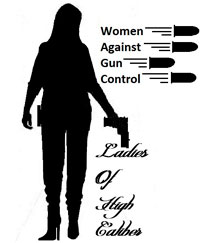California reports question success of firearm ‘fingerprinting’
California reports question success of firearm ‘fingerprinting’
Posted on Sun, Jan. 26, 2003
California reports question success of firearm ‘fingerprinting’
DON THOMPSON
Associated Press
SACRAMENTO – Two related California studies to be released this week
conclude it is currently impractical to catalog the ballistic
“fingerprints” of every firearm in California, findings gun control
opponents are using to fight calls for a national database inspired by
last
fall’s East Coast sniper shootings.
Recording every firearm made and sold in the nation’s most populous state
could be overwhelming, according to an internal California Department of
Justice report obtained by The Associated Press last fall.
Now, supporters of a nationwide database fear an independent scientific
review of that report, provided to the AP this week, will further
undermine
congressional support for a national firearms database.
Gun control supporters want California to lead the way by passing proposed
legislation requiring manufacturers to provide a bullet “fingerprint” for
every gun made and sold in California, which sells and produces the most
guns of any state. Currently, Maryland and New York require ballistics be
kept only on handguns.
State Attorney General Bill Lockyer sent the initial report to the federal
Bureau of Alcohol, Tobacco and Firearms for rebuttal, and asked for an
independent review of the research method used by his own agency while he
delayed the report’s public release.
But the independent report, conducted by Belgian ballistics expert Jan De
Kinder, supported the earlier state study and disputed the ATF’s rebuttal.
A copy of the report was provided to the AP this week after repeated
previous requests were denied.
Gun control advocates said De Kinder’s report shows such databases hold
eventual promise even if they’re not ready today.
“We think the system has tremendous potential. It clearly needs more
support and development,” said Luis Tolley, Western director of The Brady
Center to Prevent Gun Violence. “It’s similar to where we were 10 years
ago
with DNA. … If there are problems, let’s solve those problems.”
Tolley questioned why the state would ask for a review by “someone who has
been speaking out against most databases for a long time,” given Lockyer’s
support for a national database.
The review by De Kinder, of Belgium’s National Institute for Forensic
Science, will be included as an appendix in a report Lockyer will forward
to state lawmakers early next week, said spokeswoman Hallye Jordan. That
report will put the two negative studies into “context,” she said.
Lockyer is expected to conclude that a statewide database for large-scale
ballistics comparisons is not currently practical, but will call for more
research and development.
“The department’s report shows the need for leadership at the state and
federal level to further develop the technology, and ultimately establish
a
database of ballistic information,” said state Sen. Jack Scott,
D-Altadena,
who proposes that California collect the data for later use as the
technology improves.
Wayne LaPierre, executive vice president of the National Rifle
Association,
expects the Scott’s bill may pass, if “politicians in California say, ‘The
heck with the truth – we want to put this on line.’” However, he said, the
studies illustrate “this needs a lot more study or a lot of money will be
wasted.”
Lockyer earlier said the state study illustrates the massive technological
and logistical problems with tracking more than 100,000 firearms sold
annually in California, and more than 1 million nationwide. But he said
the
potential advantages mean the federal government should make developing a
usable database “a top national priority.”
Ballistics comparisons already are widely used to match specific bullets
to
specific firearms, or to link bullets found at different crime scenes to
the same weapon. Long before they had suspects in custody last fall, East
Coast investigators used such comparisons to conclude that bullets
recovered in separate shootings over a wide area came from a single rifle.
Advocates say creating a database containing the unique ballistics
“signature” of all firearms would let bullets at crime scenes be matched
to
specific weapons and owners, in the same way fingerprints can be matched
to
individuals.
California’s initial study found the number of potential computer matches
in the state alone “will be so large as to be impractical;” that “a large
proportion” of weapons couldn’t be recorded; and that each gun’s markings
change with routine use and can be easily altered. The report also said
such an expensive system would have limited results.
A California law required the final report be sent to legislators in June
2001, but Lockyer delayed its release while he asked for the reviews by
ATF
and De Kinder.
The ATF disputed much of the California report, saying with systems such
as
a more limited crime-gun database currently being developed by the ATF and
FBI, “large-scale ballistic comparison goes from an impossibility to a
valuable investigative tool.”
But De Kinder supported the state study, rejecting criticism by both the
ATF and Forensic Technology Inc., which produces the Integrated Ballistic
Identification System that was tested by the state. The IBIS system also
is
used in the fledgling national database being developed by the FBI and ATF
to compare weapons and bullets recovered at crime scenes.
Not only was the system ineffective in a third to two-thirds of test
firings, but “the situation worsens as the number of firearms in the
database is increased,” De Kinder found.
Such databases hold promise, he concluded, but not without improvements in
the current technology.



